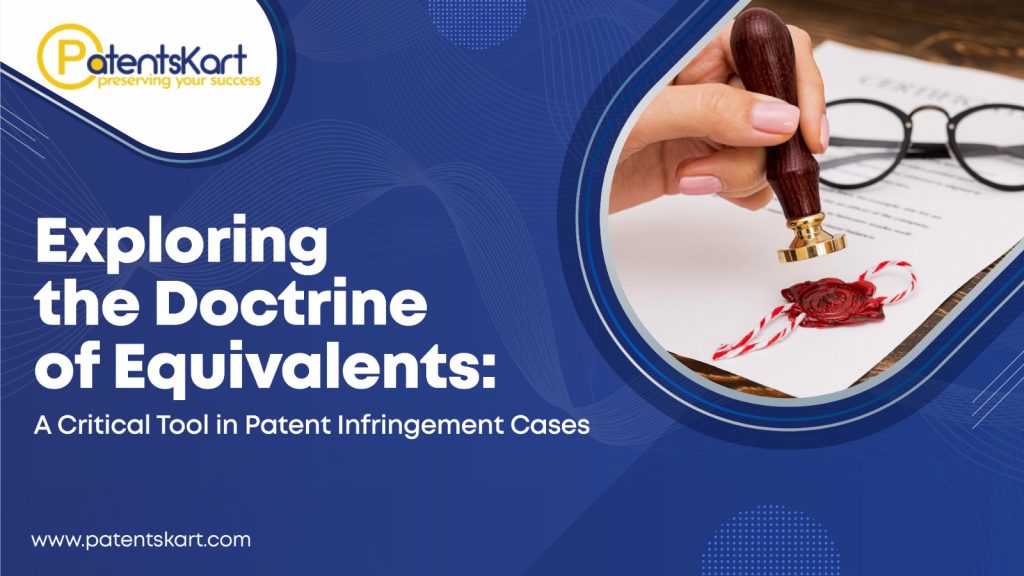Patent infringement litigation is a complex field where the interpretation of claims can make or break a case. One of the most nuanced and impactful doctrines in this realm is the Doctrine of Equivalents (DoE). This legal principle allows a court to find infringement even when the accused product or process does not fall within the literal scope of the patent claims, but is equivalent to the claimed invention. Understanding the Doctrine of Equivalents is crucial for both patent holders and those navigating the potential risks of infringement.
What is the Doctrine of Equivalents?
The Doctrine of Equivalents is a legal rule that extends the scope of patent protection beyond the literal wording of the claims. Under this doctrine, a product or process that does not literally infringe a patent claim may still be found to infringe if it performs substantially the same function in substantially the same way to achieve substantially the same result as the claimed invention.
This doctrine is rooted in the idea that slight variations should not allow a competitor to escape liability for infringement if their product or process is, in essence, the same as what is claimed in the patent.
Example:
Imagine a patent claim that describes a process involving “heating a mixture to 100°C.” If a competitor heats the mixture to 99°C, they might argue that they are not literally infringing the patent. However, if heating the mixture to 99°C achieves the same result in substantially the same way, the Doctrine of Equivalents could be applied to find infringement.
Key Tests for the Doctrine of Equivalents
To determine whether the Doctrine of Equivalents applies, courts generally use one of two tests:
- Function-Way-Result Test: This test asks whether the accused product or process performs:
- Substantially the same function,
- In substantially the same way,
- To achieve substantially the same result as the patented invention.
- Insubstantial Differences Test: This test evaluates whether the differences between the accused product or process and the patented claims are insubstantial. If the differences are minor and do not significantly alter the function or result, the Doctrine of Equivalents may apply.
Limitations and Challenges
While the Doctrine of Equivalents broadens the scope of patent protection, it also has limitations and presents challenges:
- Prosecution History Estoppel: During the patent prosecution process, an applicant may amend claims to overcome prior art rejections. If these amendments narrow the scope of the claims, the patentee may be estopped (prevented) from later asserting that the surrendered subject matter is equivalent under the Doctrine of Equivalents.
- Foreseeability: If a potential equivalent was foreseeable at the time of patent filing and the patentee did not include it in the claims, courts may not apply the Doctrine of Equivalents to cover the equivalent.
- All Elements Rule: The Doctrine of Equivalents cannot be used to cover an accused product or process that lacks a key element of the claimed invention. All elements of the claim must either be present or have an equivalent in the accused product.
- Jury and Judicial Interpretation: The application of the Doctrine of Equivalents is often left to the discretion of the court or a jury, leading to unpredictable outcomes. This uncertainty can make it difficult for companies to assess their risk of infringement or to enforce their patents confidently.
Global Perspectives on the Doctrine of Equivalents
The application of the Doctrine of Equivalents varies across jurisdictions. For instance:
- United States: The Doctrine is well-established and frequently used in patent litigation, although it is tempered by limitations such as prosecution history estoppel.
- Europe: The Doctrine of Equivalents is applied more conservatively, particularly under the European Patent Convention (EPC). The European courts may be less likely to find equivalence compared to U.S. courts.
- Japan: Japanese courts also recognize the Doctrine of Equivalents, but they apply a strict analysis to ensure that the accused product or process is not a foreseeable variation of the prior art.
Understanding these differences is crucial for multinational companies that must navigate the complexities of patent enforcement across different legal systems.
Strategic Considerations
For patent holders, the Doctrine of Equivalents offers a powerful tool to protect innovations against slight modifications by competitors. However, drafting patent claims with this doctrine in mind is essential. Ensuring that your claims are broad enough to cover potential equivalents while avoiding unnecessary amendments during prosecution can preserve the ability to assert the Doctrine of Equivalents in litigation.
For those concerned about potential infringement, conducting thorough freedom-to-operate (FTO) analyses and understanding the scope of existing patents under the Doctrine of Equivalents can help mitigate risks.
Conclusion
The Doctrine of Equivalents plays a critical role in the enforcement of patent rights, ensuring that slight variations do not allow competitors to sidestep infringement. However, its application is complex and requires careful consideration during both patent prosecution and litigation. By understanding the intricacies of the Doctrine of Equivalents, patent holders can better protect their innovations, and companies can navigate the risks of infringement more effectively.







